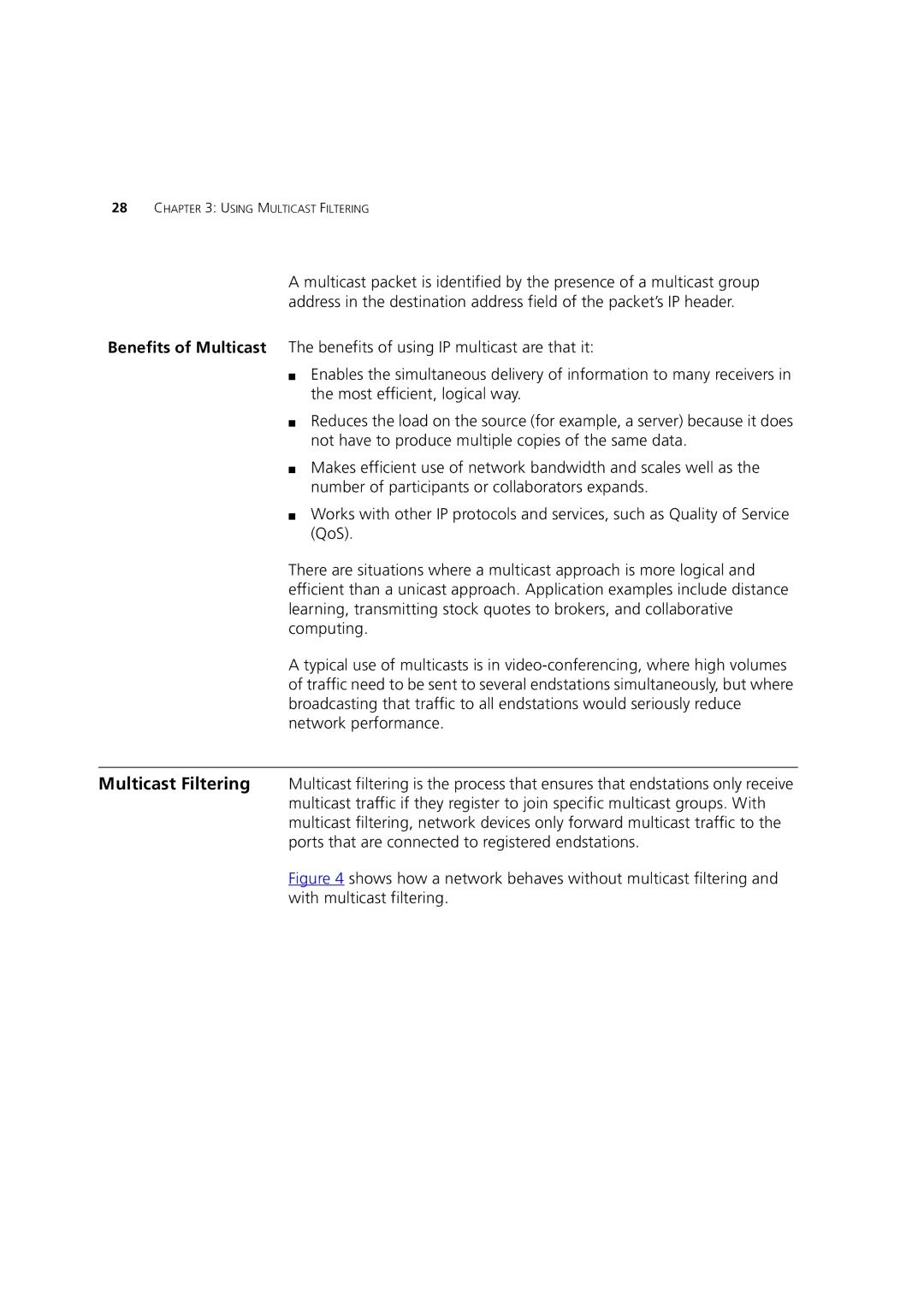28CHAPTER 3: USING MULTICAST FILTERING
A multicast packet is identified by the presence of a multicast group address in the destination address field of the packet’s IP header.
Benefits of Multicast The benefits of using IP multicast are that it:
■Enables the simultaneous delivery of information to many receivers in the most efficient, logical way.
■Reduces the load on the source (for example, a server) because it does not have to produce multiple copies of the same data.
■Makes efficient use of network bandwidth and scales well as the number of participants or collaborators expands.
■Works with other IP protocols and services, such as Quality of Service (QoS).
There are situations where a multicast approach is more logical and efficient than a unicast approach. Application examples include distance learning, transmitting stock quotes to brokers, and collaborative computing.
A typical use of multicasts is in
Multicast Filtering Multicast filtering is the process that ensures that endstations only receive multicast traffic if they register to join specific multicast groups. With multicast filtering, network devices only forward multicast traffic to the ports that are connected to registered endstations.
